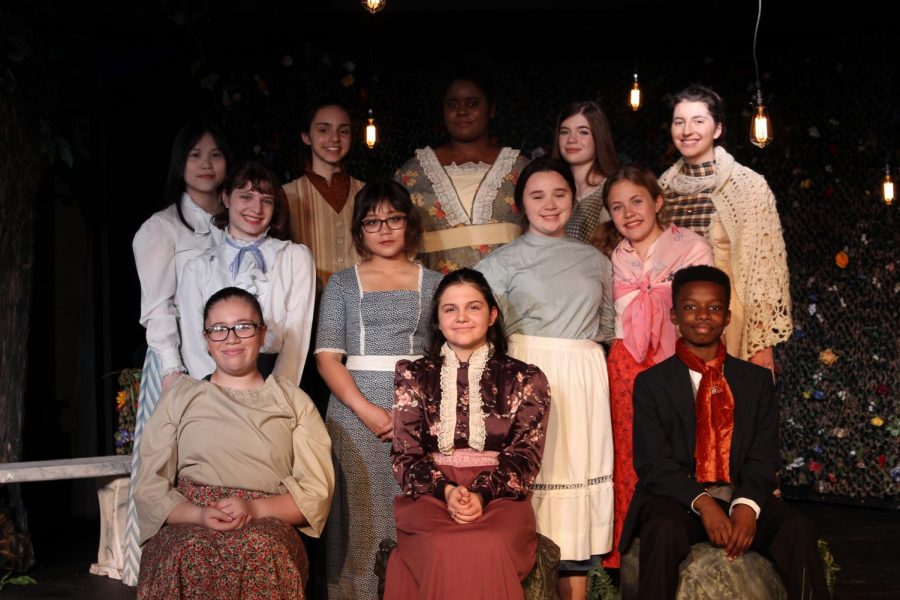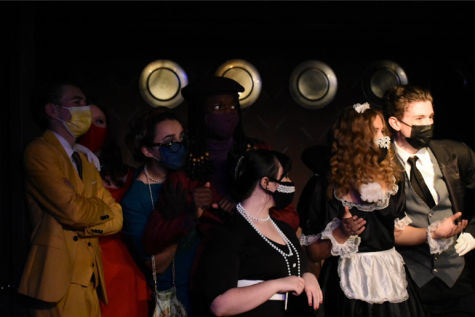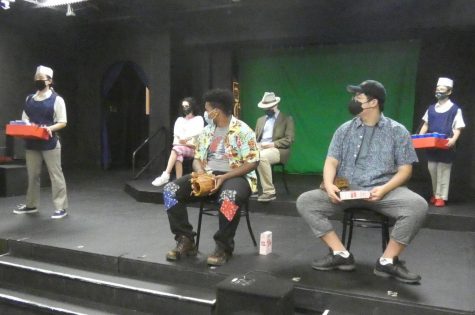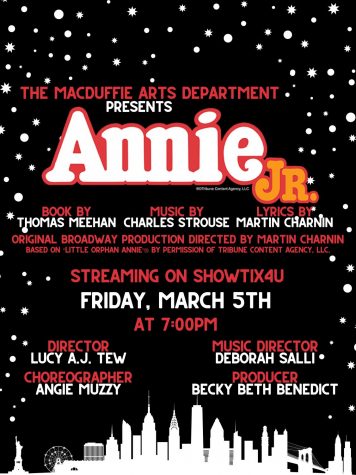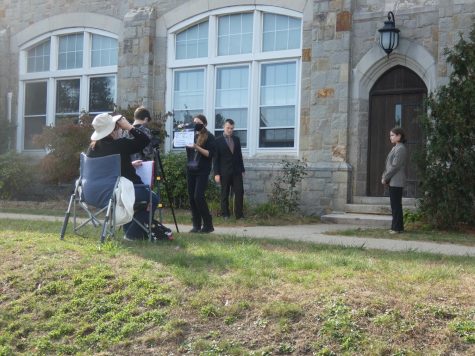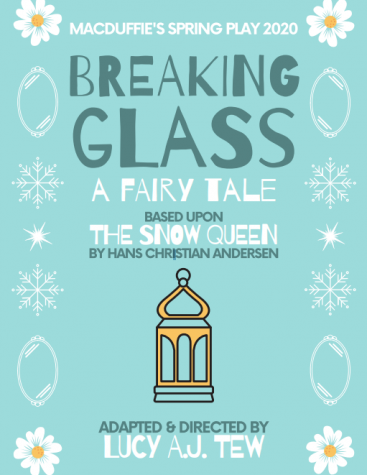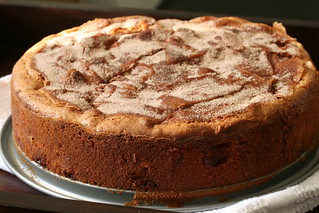In the Graveyards: Reviving the Dead
Cast photo for In the Graveyards, performed in MacDuffie’s Little Theater on May 11 and 12. Photo credit: Carrie Lu ’19.
June 1, 2018
On May 11th and 12th, the Little Theatre performed In the Graveyards, directed and devised by middle school theatre teacher Lucy Tew. The play featured music of southern family band Delta Rae, as well as excerpts from the Spoon River Anthology compiled by Edgar Lee Wright, and was split into sections I – XI. Each section included a monologue taken from the Spoon River Anthology, performed by one of the thirteen total actors.
In the Graveyards is, according to Tew, an “experimental theater” work that focuses on the meaning of human experience. In the director’s note, she said, “I have always been enthralled by how stories are linked to human experience and the ways in which stories can be told – through dance, music, or poetry, in the case of In the Graveyards.”
Within each monologue, characters reflected upon life experiences about love, pain, and joy. Edith Conant, played by sophomore Alison Jackson, explained that experiences in life are like memories, precious and fleeting in a changing world. Georgianna Gray, played by junior Hailie Le, lamented the loss of meaning in life because of her fear to explore the unknown.
In addition to monologues, musical numbers featured songs ranging all the way from the uplifting “Dance in the Graveyards” to the dark and voodoo-style “Bottom of the River.” The former was used as the closing number for In The Graveyards, as it is most commonly known as Delta Rae’s encore number at concerts. In addition to that homage, Tew chose the song for its symbolic meaning. She explained, “To me what it meant is saying goodnight to a group of people… saying good night to the characters… and that good night is not goodbye.”
Tew says that if she could sum up the production in one sentence it would be “Human experience, the many things that make it different, and the many things that unite it.” The latter part of this statement is also applicable to the work that was put into compiling the monologues and music selections together in a way that would be unified and expressive.
For example, Tew was first inspired to use “Bottom of the River” from Delta Rae’s album ‘Carry the Fire’) when she listened to it in concert and envisioned Macbeth’s witches. Later, the song choice was solidified in reading the monologues of Mrs. Charles Bliss, Aner Clute, Nancy Knapp, and Mrs. Sibley, the witchlike characters that were added to the script. Tew remarked that as it all came together it was like “two sets of people a hundred and twenty years apart are having the same thoughts”.
Overall, the production was a rewarding experience for both the actors and Tew, who said of the MacDuffie theater, “It’s a wonderful place to try new experiences, and I couldn’t be happier to be a part of it… It does wonderful things for people.” In the future, Tew envisions the possibility of directing another contemporary piece similar to In the Graveyards.
